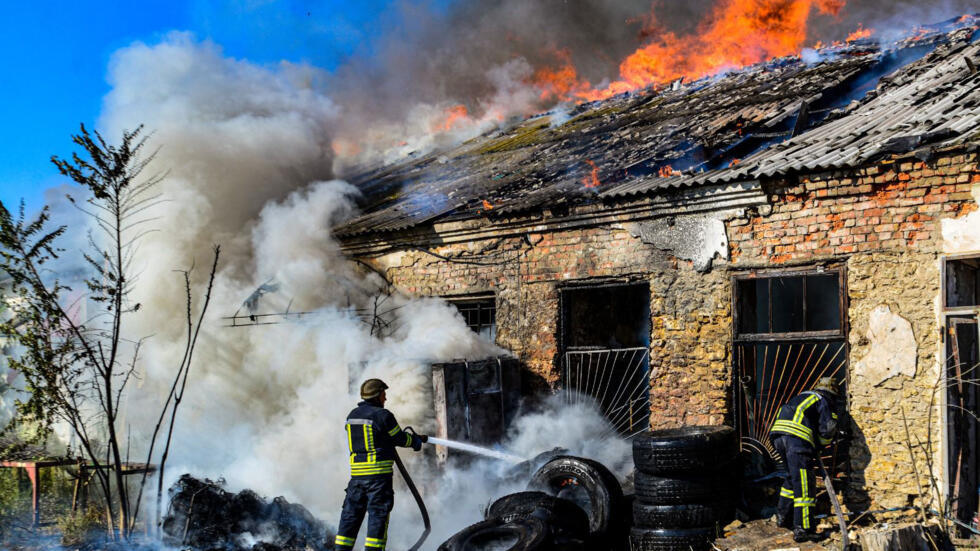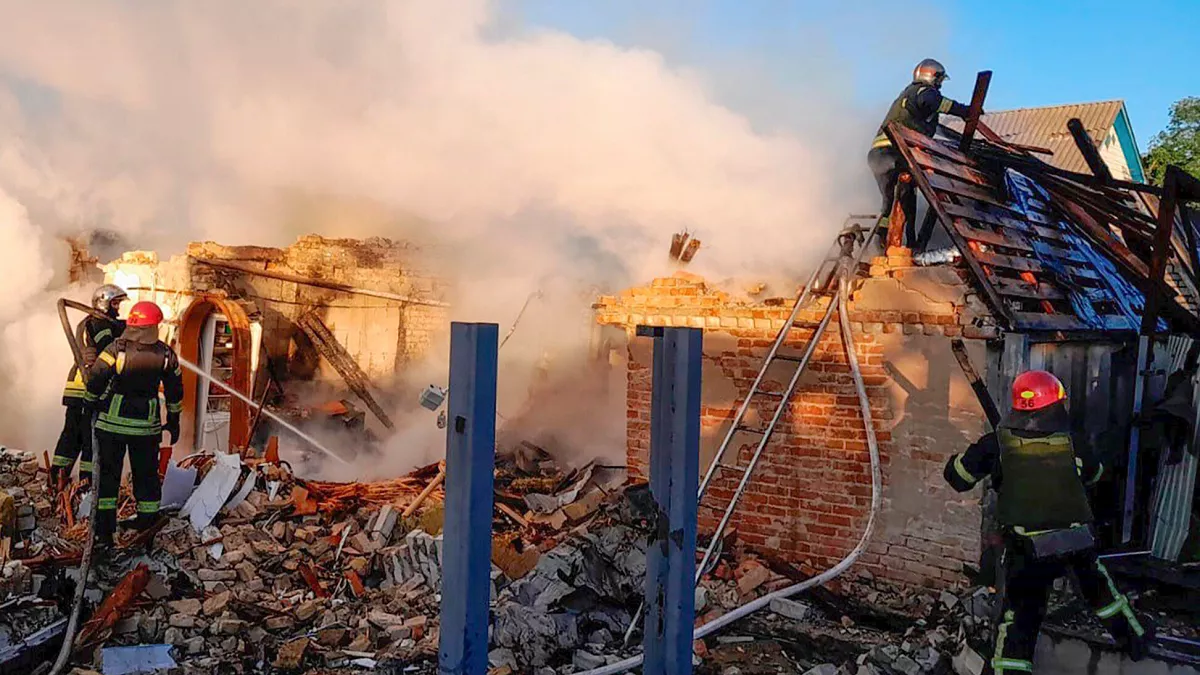The ongoing war between Russia and Ukraine has escalated into a new dimension, with both nations engaging in unprecedented numbers of drone strikes. Over the weekend, Russia launched a record 145 drones in a single night against Ukraine, while Ukraine retaliated with its largest drone attack on Moscow.
This exchange marks a significant increase in drone warfare, bringing forth implications for both military strategies and the civilians caught in the crossfire.
The Surge in Drone Warfare
Drones have become an integral component of modern warfare, particularly in the ongoing Russia and Ukraine conflict. They offer an efficient means of launching attacks without putting soldiers’ lives directly at risk. Recently, Russia used 145 drones in one night against Ukraine, marking the largest drone assault in a single night since the conflict began.
According to Ukrainian President Volodymyr Zelensky, these drones included Shahed drones—affordable, one-way attack drones often launched in swarms. These drones are low-cost and highly effective at hitting targets, making them appealing for repeated assaults on enemy territory.
This escalation indicates that both sides are increasingly leaning on drones to assert dominance, especially as both countries contend with extensive supply chain demands and high casualty rates from traditional combat.
Read : Ukraine Attacks Russian Weapons Factory
Ukraine’s response has been similarly aggressive, targeting Moscow with the largest number of drones seen in a single attack. A total of 34 drones were launched at the Russian capital overnight, causing flight disruptions at Moscow’s Domodedovo and Zhukovsky airports.
Russian air defense systems managed to intercept all drones, but the assault still forced temporary closures and created considerable unrest among local residents.
Read : PM Modi Receives Russia’s Highest Civilian Honour- Order of St Andrew the Apostle: Watch
This record-breaking exchange shows that drones are no longer a supplementary tactic but rather a central tool in the conflict, capable of exerting significant pressure on enemy infrastructure and public morale.
Civilian Impact and Rising Tensions in Moscow
The increased reliance on drone attacks is beginning to take a toll on civilians, particularly in densely populated urban areas. In Moscow, shrapnel from downed drones reportedly damaged homes in the Ramenskoye region, with one woman sustaining injuries. Her injuries—burns to her face, neck, and hands—highlight the dangers of modern warfare reaching urban settings, where unintended victims are often caught in the crossfire.
Similarly, residents in Ukraine face the constant threat of aerial attacks. With an estimated 600 drones launched by Russia in one week alone, the scale of these attacks has forced Ukrainian civilians into a perpetual state of alert, as the strikes pose severe risks to life and property.
Beyond physical damage, the psychological impact of living under constant threat is enormous. For many Ukrainians, the sound of drones overhead has become an ominous warning of potential destruction, prompting mass evacuations and causing significant disruptions to daily life.

The attack on Moscow marks a new chapter in the war. Previously, large-scale drone strikes had primarily affected regions closer to the front lines, but now the Russian capital has become a significant target. This shift underscores the potential for urban centers to face increasing hostilities, making civilians more vulnerable than ever.
Drone warfare has a unique psychological impact on civilian populations, with the frequent drone activity in Moscow instilling fear and a heightened sense of vulnerability among its residents.
Implications for the Russia and Ukraine Conflict
The escalation in drone warfare between Russia and Ukraine has several implications for the broader conflict. First, it suggests that both sides are adapting their military strategies to reduce the need for frontline ground forces, which can be costly and logistically challenging.
Instead, drones offer a flexible, less labor-intensive means to deliver strikes, allowing each side to extend the range and frequency of attacks without significant troop involvement.
As both countries rely heavily on drones, it’s likely we’ll continue to see increased investment in this technology, with each side aiming to gain an edge in terms of drone capabilities, stealth, and effectiveness.
Moreover, the increase in drone activity is likely to affect diplomatic relations with other nations and may potentially draw third-party countries into the conflict. The sheer scale of drone attacks in recent months, with Russia using hundreds of drones and Ukraine increasing its retaliatory strikes, raises questions about international responses to this escalated warfare.
Countries such as the United States, China, and Turkey—major players in the drone manufacturing sector—may face pressure to reassess their roles in the conflict, either through diplomatic interventions or increased support for one side or the other.
Additionally, neighboring countries like Belarus and Moldova, which recently reported sightings of Russian UAVs leaving Ukrainian airspace, may find themselves caught in the geopolitical crossfire as the conflict intensifies.

Lastly, this shift to drone warfare could set a precedent for future conflicts around the world. The Russia and Ukraine conflict serves as a stark example of how drones can be deployed on a massive scale to alter the dynamics of war. Observing the tactics and technologies employed by both sides, other nations may adopt similar approaches, potentially reshaping global military strategies.
The success or failure of these drone tactics will have implications beyond the current conflict, influencing how future battles are fought and possibly encouraging other nations to develop and stockpile drone fleets in preparation for combat.
The record-breaking exchange of drone strikes between Russia and Ukraine demonstrates a significant shift in the nature of warfare. This new phase of conflict brings unique challenges for military operations, urban safety, and international diplomacy.
As the world watches these developments, one thing is clear: the role of drones in warfare is only set to grow, raising pressing questions about the future of security and the potential for collateral damage in densely populated areas.
let’s enjoy few years on earth with peace and happiness….✍🏼🙏

